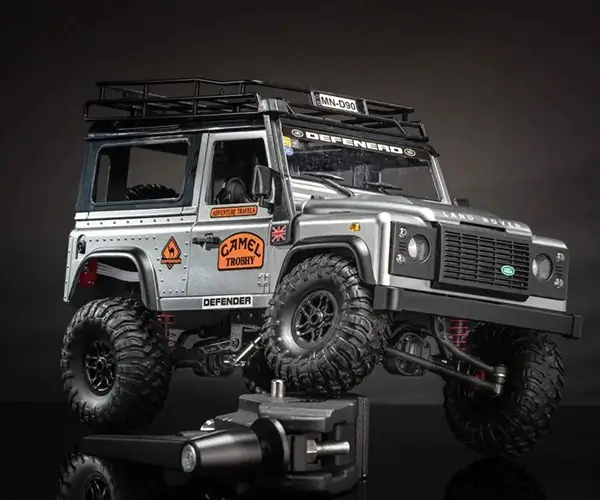Imagine a world where machines move with the grace of a ballerina, where robotic arms perform intricate tasks with pinpoint accuracy, and automation systems operate seamlessly and quietly. Beneath these marvels of modern engineering lies a small yet mighty component: the stepper motor. Renowned for its ability to convert electrical pulses into precise mechanical movement, the stepper motor has revolutionized various industries—from manufacturing to healthcare, from 3D printing to scientific research. But what truly propels its capabilities into the realm of super-precision is a technique known as micro stepping.

At first glance, a stepper motor might seem straightforward: each pulse moves the rotor by a fixed angle—commonly 1.8 degrees—resulting in 200 steps per revolution. This foundational feature allows for discrete, repeatable positioning without the need for feedback systems like encoders. Yet, for applications demanding even finer resolution, the basic stepping mode might not suffice. Enter micro stepping—a sophisticated control method that divides each full step into multiple smaller steps, resulting in smoother movement, better positional resolution, and enhanced performance.
But how exactly does micro stepping work, and why has it gained so much traction? To understand this, let's journey into the inner workings of a stepper motor. The core principle revolves around electromagnetic coils and the rotor's magnetic poles. When current flows through the coils, it generates a magnetic field that pulls the rotor into a specific position. Sequentially energizing the coils causes the rotor to “step” from one position to the next.
In the standard full-step mode, the coils are energized in sequence, resulting in distinct, well-defined steps. However, this method can cause vibrations, uneven movement, and audible noise—especially at higher speeds. Micro stepping addresses these issues by carefully controlling the current in each coil, creating a more continuous and refined motion profile.
The secret sauce of micro stepping lies in the use of advanced stepper drivers capable of delivering smoothly varying current waveforms—either sine, cosine, or more complex profiles—to each coil. Instead of turning the coils on or off, these drivers modulate the current gradually, making the rotor follow a virtual “micro step” that lies in between full steps. For example, operating in 1/16 micro stepping mode divides each full step into 16 smaller increments, providing 3,200 micro steps per revolution for a typical 200-step motor.
Why Micro Stepping Matters
Micro stepping brings a host of tangible benefits. To start, it significantly enhances positional resolution. When you increase the number of steps per revolution, you obtain finer control over the motor’s position, enabling more precise movements. This is particularly beneficial in applications like CNC machining, 3D printing, and optical equipment, where millimeter or even micrometer accuracy makes a real difference.
Furthermore, micro stepping smooths out the motion. Instead of perceivable jumps from one step to the next, the rotor moves in a gentle, almost fluid manner, reducing vibrations, noise, and mechanical resonance. This not only prolongs the lifespan of the motor and its components but also improves the overall quality of operation. For instance, in 3D printers, smoother motion translates into better surface finish and fewer artifacts.
Another essential advantage is reduced torque ripple—the variation in torque as the rotor steps through different positions. While full-step modes can exhibit noticeable torque fluctuations, micro stepping evens out the torque profile, contributing to quieter operation and more consistent force application.
From an electrical perspective, micro stepping also helps manage heat and power consumption. Because the current waveforms are modulated smoothly rather than abruptly switching on and off, the motor experiences less electrical stress and generates less heat, facilitating longer run times and more reliable performance in demanding environments.
Yet, it’s worth noting that micro stepping isn't a one-size-fits-all solution. While it exponentially improves positional resolution and operational smoothness, it often does so at the expense of holding torque—especially at high micro step fractions, where the torque can dip significantly. As a result, engineers must balance the desired resolution against the torque requirements of their application.
The Evolution and Implementation of Micro Stepping
The concept of micro stepping actually dates back several decades, closely intertwined with developments in digital control technology. Early drivers used simple waveforms and analog circuitry, offering limited micro stepping options. But as digital electronics and DSPs (Digital Signal Processors) advanced, drivers became more capable, enabling precise control of current waveforms and seamless micro step transitions.
Modern micro stepping drivers use sophisticated algorithms and high-frequency pulse-width modulation (PWM) to produce near-ideal sine or other waveforms. These drivers often support a variety of micro stepping modes—such as 1/2, 1/4, 1/8, 1/16, 1/32, and even higher divisions—allowing users to tailor the motor’s behavior precisely.
Since micro stepping depends heavily on accurate current control, high-quality drivers and stable power supplies are essential. Imprecise waveforms, noisy signals, or voltage fluctuations can diminish the advantages of micro stepping, leading to inaccuracies or inconsistent motion. That’s why, in high-end systems, meticulous attention is paid to driver design, shielding, and power management.
Finally, there’s an important distinction to emphasize: while micro stepping greatly improves positional resolution, it doesn't inherently provide direct feedback about the rotor’s actual position. For closed-loop accuracy, additional sensors such as encoders or resolver systems are often employed alongside micro stepping drivers, forming hybrid control strategies.
In the next section, we’ll explore real-world applications—showcasing how micro stepping transforms the capabilities of machines and devices across industries—and discuss the challenges and future trends shaping this fascinating field.
Established in 2005, Kpower has been dedicated to a professional compact motion unit manufacturer, headquartered in Dongguan, Guangdong Province, China.




































